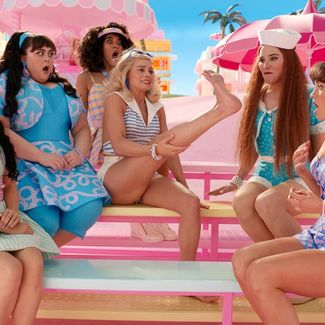
Brands Should 'care less and help more' - Leo Burnett's PopPulse report
Tom Sussman on why more brands should follow the Barbie example and spread more joy
06 November 2023
There's no doubt about it, the British public are facing tough times. We still have a cost of living crisis, global geo-political tensions are reverberating, NHS waiting lists are getting longer, it's getting colder outside.
However, despite what the media portray, the public is not in unmitigated despair. Instead we're stuck in limbo with no clear end in sight according to PopPulse, a nationwide research platform developed to understand the true emotions of the British public.
The PopPulse report by Leo Burnett, in collaboration with The Outsiders, is based on the opinions and discussions of individuals from various professions, including hairdressers, beauticians, bar staff, personal trainers, and decorators, who have regular interactions with people in their daily jobs.
To validate these insights, Leo Burnett conducted conventional group discussions across the UK and held in-depth interviews with five specialised experts: a neuroscientist, anthropologist, cultural consultant, personal finance journalist, and trends consultant.
And the report concluded that brands by urging brands to get in there and help.
We caught up with Tom Sussman, deputy chief strategy officer at Leo Burnett, to delve deeper into the insights.
Let’s discuss the genesis of this report. What prompted it?
We’d felt the need for a platform like PopPulse for some time.
Whilst Covid and its lockdowns had thankfully faded into the past, a persistent sense of disconnection seemed to have been left behind. We just couldn’t be confident that our industry really knew how people outside of the marketing bubble were feeling.
Obviously, for an agency that believes in the power of populist creativity, that was a bit of a problem!
To close the gap, we started by helping our clients with various waves of ethnography and focus groups. However, it was increasingly clear that, to really pop the bubble, we needed something completely different.
The research skipped focus groups, opting to involve 'listeners' like hairdressers and personal trainers. Do you think this approach produced better results?
There is obviously value in all sorts of research. However, we couldn’t shake the feeling that our industry’s reports were still looking at things with an inherently “ad-land” perspective.
This is where “listening to the listeners” came from - we wanted to capture people’s most honest and unvarnished opinions, and we wanted the people that analysed and consolidated these opinions to also be members of the same audience, not marketing professionals.
In the end, the results were stunning. It turned out that, in the midst of the Cost-Of-Living-Crisis, all we needed to trigger some of the most emotionally revealing insights we’d ever heard was a hairdresser asking, “Going anywhere nice on holiday?”
What were the most unexpected or surprising insights that emerged?
One thing didn’t surprise us: life is clearly very hard right now. That was obvious going in.
However, what we were amazed to find out was just how resilient our respondents had become. Contrary to all the middle-class handwringing we’d witnessed, our C2DE audience were proud of how they’d learned to cope.
It was clear this really wasn’t their first rodeo and the one thing they absolutely did not want was anyone’s pity.
In the face of the various challenges the report highlights, how will this report help your clients effectively navigate the landscape and make a positive impact?
Our report outlines four key things brands can do, to help their customers navigate ‘Life In Limbo.’
These could conceivably be used to fuel creative strategies, shape client briefs, or even guide a brand’s full annual plan.
Excitingly, we’re already seeing evidence of our learnings being used for all three!
How can brands strike a balance between creating joyful moments and remaining sensitive to the real challenges people are experiencing?
The first thing to say is that providing some joyful content for a moment of escapism is arguably one of the most sensitive things a brand could do right now.
Post Covid, we all seem to have adopted the misguided belief that being sensitive to a situation necessarily means explicitly reflecting it. However, what this report suggests is that providing a sensitive solution (even if that’s just a welcome moment of escape) is actually far more important than just explaining your heartfelt intent.
The message for brands is crystal clear: care less and help more.
How do you envision brands successfully helping people build emotional reserves, and what promising initiatives have you seen in this regard?
As we say in the report, the key will be to worry less about scale of production and more about scale of emotion. That means facilitating those moments that - whether big, small, every day or impromptu – bring people together, create an emotional peak and so stand a chance of leaving a mark.
For real and usable inspiration, just look to the entertainment industry. With the fragmentation of popular culture, record labels and streaming platforms have had to work that bit harder just to make their content stick.
The crowning achievement of all this was, of course, that moment in 2023 when Mattel convinced us all to don pink, pose for photos with our friends, and make a proper memorable event of an otherwise routine trip to the cinema.






